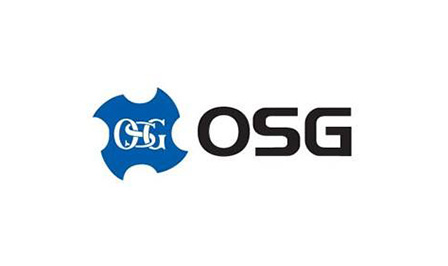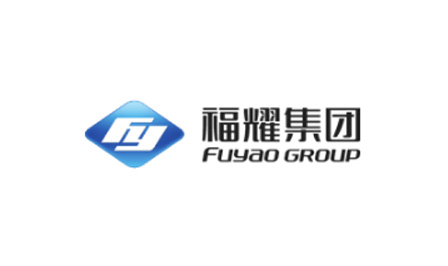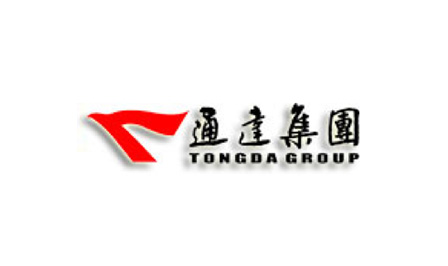With the increasing pressure of competition, enterprises are constantly seeking ways to use information technology to improve their competitiveness in order to successfully cope with various challenges. PLM is one of the most important ways for enterprises, and it is common in almost all major industries around the world. However, it is a long and arduous process for an enterprise to evaluate and select a product lifecycle management (PLM) solution provider as a long-term strategic partner. In fact, by asking the right questions, enterprise users can better understand their needs and the ability of solution providers to meet them.
Based on the experience of cimdata research company and the interview with application enterprises, this paper lists 10 important questions that enterprises should raise to potential PLM solution suppliers. Through the answers given by suppliers, application enterprises can deeply understand how their solutions will meet the key business requirements related to PLM of enterprises. These 10 questions mainly focus on the problems that the enterprise has raised with PLM solution suppliers, or the problems that the enterprise has realized after the event that it is helpful to select suppliers but has not raised. It is worth noting that these problems are easy to be ignored or prevaricated in PLM evaluation and selection. If enterprises fail to correctly identify and solve these problems in PLM evaluation and selection, they may face the dilemma that the selected solutions are insufficient to meet their future needs.
With regard to these 10 key issues for PLM, application enterprises should not only understand whether system providers can provide such functions, but also how they can provide such functions. "How" is the key factor.
Question 1: how to support multiple mechanical CAD designs and change management in a distributed environment?
In the process of product development, even in the whole product life cycle, most enterprises not only deal with internal resources, but also deal with partners, suppliers and customers. This often requires the exchange and use of design information from a variety of mechanical CAD systems (MCAD). The ability to easily use CAD models from multiple sources, such as viewing, auditing, and modifying, is a key element in the efficient operation of the supply chain. Therefore, application enterprises need to understand how PLM solution providers will help enterprises to work in a variety of MCAD environments, including those used by their own companies, suppliers and customers. In particular, what kind of CAD system is supported?
The extended questions also include: what functions are provided to process multiple MCAD data? How to import and export information among these systems? Are related functions provided to allow users to view the assembly from multiple MCAD systems? Which file format is used to process the assembly from multiple MCAD systems? How to change multiple MCAD models / data and automatically copy these changes back to the original system Can changes and version control be maintained during editing?
Question 2: how to support integrated MCAD, ECAD, software design and configuration management?
Today's industrial products, including mechanical, electronic and software components, are increasing day by day. In many cases, software is the main difference between different categories or models of products. The key to improve product design satisfaction and integration is to manage mechanical, electronic and software components and components in a single integrated product form. Therefore, the enterprise should ensure that these three components can be effectively integrated into the design and development stage of the whole product development process, and properly integrate the design, configuration, verification and management in the whole product life cycle of machinery, electronics and software. At the same time, enterprises should also ensure that the changes made by users that may affect other fields can be effectively transmitted to all fields, such as mechanical computer-aided design (MCAD), electronic design automation (EDA), simulation and analysis (S & A) and embedded software.
Through this question, enterprises can understand what level of mechanical, electronic and software design and development PLM products support? What design systems are supported? How will these systems be integrated into the whole process? At the same time, they can also understand how to communicate changes between different fields to maintain the consistency of configuration management: not only understand the functions provided, but also understand these functions In order to determine whether it is suitable for your (current or planned) work environment and process.
Question 3: how does your solution help us standardize business processes and transform and strengthen business and it applications?
The implementation of PLM environment provides an opportunity for enterprises to take advantage of PLM managed workflow and applications for process audit and it environment rationalization. By standardizing processes and applications, enterprises can reduce the complexity of their working environment: employees can use multiple applications on a common user interface, that is, they have the same information source, so they can work more easily. In addition, the reduction of integration points between applications also reduces the cost of maintenance upgrades and support.
Therefore, the supplier should explain how to apply its solution to process standardization, including supported processes and change proposals. For example, which integrated applications can replace multiple applications currently in use. If the solution does not fully meet the needs of the enterprise, consider whether it is necessary to obtain other modules from the solution supplier, or some tools from other suppliers. At the same time, it is necessary to consider the impact of such substitution on other organizations that may use the substituted application, whether they can use the new integrated application, and whether their requirements can be met by the new application and process?
Question 4: with the continuous growth of business, how can PLM solutions develop from basic implementation to provide more advanced PLM functions?
PLM solutions are constantly improving and upgrading, and constantly introducing new functions. With the increase of business requirements, enterprises usually want to evaluate and use these new functions to expand the functions of basic data package and BOM management to include more functions. At the same time, enterprises all want to achieve seamless expansion, so that they can expand on demand without continuous cost for re implementation or even long-term maintenance of customized solutions. As an important enterprise investment, PLM environment should be able to easily expand to meet the increasing business needs.
Therefore, it is necessary to understand how PLM solution providers build their solution suites, first of all, whether new functions are built on the same it architecture and data model? Whether user interface paradigms are the same? Can they be adjusted according to the terms and tasks of new users to simplify the adoption and extended use of product information? In addition, it is necessary to understand what interdependencies exist and must be full of What are the requirements to deploy new features so that the cost and impact of deploying these new features can be fully assessed. Of course, it's also important to know whether the current IT infrastructure supports new features, or whether it needs to be expanded, enhanced, or replaced.
Question 5: what best practices are supported in a ready to use solution that meets our specific business needs?
PLM solution providers will develop and provide pre configured solutions based on industry and specific business functions. These out of the box (ootb) solutions aim to save configuration time and cost. Vendors also incorporate best practices into their solutions, some of which are widely available, while many others are industry specific. Application enterprises need to understand the best practices and ways of providing provided by suppliers, so as to determine whether it is applicable to the enterprise. It should be noted that the purpose of ootb solution is to cancel customization, or control the proportion of customization below 20% of the overall solution.
Specifically, application enterprises need to understand the best practices and reasons recommended by suppliers in detail. Are these practices applicable to the industry, especially the business model of the enterprise? Do they cover specific industry standards? If so, what standards are covered? How are they covered? How do you adjust the default workflow to adapt to the industry? How do you adjust these workflows to meet the specific needs of the enterprise? At the same time, you need to determine the extent to which the solution fits the entire PLM environment, such as What? What is the relevance of ootb solutions? Are suppliers' ootb solutions configured cost effectively to meet any specific requirements of the enterprise?
Question 6: how to support security collaboration within the enterprise and in the whole supply chain?
Under the situation of economic globalization, all enterprises have to deal with employees, partners, suppliers and customers scattered in the huge supply chain. Therefore, each enterprise needs not only the ability of efficient collaboration, but also the ability to protect their intellectual property rights, and sometimes even to cooperate with competitors on certain specific projects. In summary, it is essential to understand the security capabilities that your PLM solution can provide.
In this respect, application enterprises should understand the following questions: how does the PLM solution support external collaboration? What is the scope of supported collaboration? What security protocols are supported? How can we configure and set up our own PLM collaboration environment? How to ensure the security of change management in the distributed environment? How does the solution support digital rights management? How does the solution work according to the project and independent collaboration As a partner, users and product information can be kept confidential, so as to cooperate with competitors and maintain control of intellectual property rights when appropriate?
Q7: do all PLM applications use the same architecture, data model and standards?
Reducing the complexity of the entire PLM environment helps drive expansion, share product information, and reduce support costs. Therefore, the application enterprise must understand whether the PLM solution supplier can provide a single unified or complete architecture? That is to say, whether all the functional applications contained in the PLM solution are designed and built on the same technical basis, and use the same data model and database? Whether the PLM solution can be based on the role no matter which functional module the user operates in And task requirements to provide users with a consistent situational interface? At the same time, it is necessary to understand whether the data model is consistent and applied to all functional applications? What technical standards are used and supported? How do these standards fit with the existing standards of the company? What are the short-term and long-term architecture strategies and directions established by solution providers for their products? How do they support the newly acquired What are the features and applications that differ from their core solutions? Once adopted, how will the elements of these solutions be integrated into the fully deployed PLM environment?
Question 8: what tools do you provide or need to configure and extend the solution's data model, user interface, functionality, workflow, etc?
No PLM solution can be applied to all enterprises without adjustment. While best practice means that a solution can be put into use without change, it's not always feasible. In order to make full use of PLM investment, many PLM solutions need to be adjusted to meet the specific business needs and business processes of the enterprise, so as to avoid any coding or customization work requiring long-term support.
From this point of view, application enterprises should understand the level areas that PLM suppliers support adjustment and customization. It should be understood if there are any limitations that may make it necessary for an enterprise to conduct custom development. Whether the application can use graphical management (or user) tools to modify data models, user interfaces, workflows, best practices, reports, etc. when business needs. At the same time, it is also necessary to understand how the supplier supports the dynamic adjustment (customization if necessary) when upgrading and releasing the new version, what are the limitations of the product, and what is the reverse compatibility of the version?
Question 9: how can we integrate the proposed PLM solution into our existing business systems and processes?
PLM is both an enterprise investment and a solution. Therefore, it should interact with other business applications and systems. Therefore, enterprises need to understand which functions provided by the evaluated PLM solution can integrate with other systems (and support these integrations). You should also understand the supplier's integration methods, support tools and technologies, and the ready to use integration solutions (such as MCAD, ERP, and SCM) provided.
Specifically, the questions that application enterprises should ask include: do PLM solution providers identify and publish APIs for all their applications and functions? Which functions have not yet been provided? Do they provide a complete set of APIs in the solution? Are there any restrictions when integrating or adjusting / customizing the environment? Do they provide integration with other business systems? If so, what integration? How to integrate? PLM solution providers can provide standard integration with ERP solutions, but this does not mean that their solutions can meet your business needs immediately, and may need to be modified to fit your business. Then, will the supplier provide tools to help users modify? Are there any restrictions in the modification process? What integration standards does the PLM system support? Does it support industry-specific standards? What are the specific standards?
Q10: how does your architecture adjust to meet changing business needs?
With the continuous development of enterprise business and the enhancement of PLM capability, its PLM solution and environment need to be expanded in the future. The drivers for scaling include an increase in the number and complexity of hosted data, an increase in the number of concurrent users and locations accessing the solution, and an increase in available functionality. Therefore, the application enterprise needs to understand how the PLM solution is structured according to the expansion requirements and the process of gradually deploying new functions - it needs to understand whether the current PLM environment can only be applied to a single event, or can / must be applied to a joint environment composed of multiple similar events. At the same time, the solution supplier must also specify the largest scale implementation and typical configuration completed, and must provide examples. Only in this way can enterprises know the existing restrictions and the decisive factors of these restrictions. For companies that have deployed the solution on a large scale, enterprises can learn from their experience, understand their possible development problems, and how suppliers solve these problems. In addition, it is important to understand the objects and methods of their implementation.
It is a difficult process to select the PLM solution supplier that best meets the business needs, but by asking the above questions, the application enterprise should be able to better understand its own needs and the ability of the supplier to meet these needs. Understanding your business needs and summarizing past problems with implementing PLM and other business solutions will help ensure a comprehensive understanding of the costs of deploying a new PLM solution or expanding the original solution. Guided by these 10 questions, enterprises can focus on key areas of successful implementation of new (or expanded) PLM environments. Getting answers to these questions can help enterprises choose the right PLM solution partners and make the most of PLM in the enterprise.
Last:Difficulties in production control of mould enterprises in ERP system
Next:Mould production management software makes better decision for enterprises



